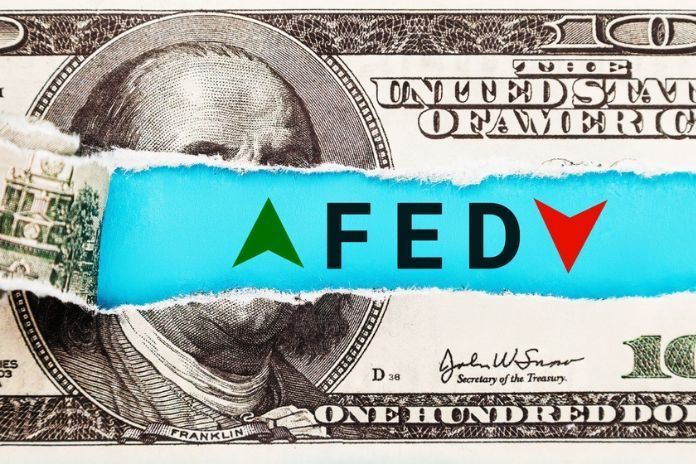Housing Market Predictions for 2024
(MoneyforAgents.com) – In September 2023, the median sale price of an existing home in the United States was a substantial $394,300, marking the third consecutive month of year-over-year price rises.
Additionally, as of the beginning of November, the average rate for a 30-year mortgage was 7.69 percent, which was still close to 20-year highs but mercifully below 8 percent.
In the upcoming year, residence values, mortgage interest rates, and stock levels will all influence housing affordability. Wondering where these patterns might lead? Read on to learn what the experts predict for the 2024 housing market.
In 2024, what will become of the housing market?
Because of the Federal Reserve's fight against inflation, interest rates nearly doubled in 2022 and have been high ever since. Mortgage rates have increased in lockstep with the Fed's extended run of rate hikes, even though the Fed does not directly set mortgage rates; instead, mortgage lenders follow its lead.
'Higher rates will always be the new normal as the economy keeps growing," said Greg McBride," Chief Financial Analyst at Bankrate.
Although many believe the Fed's battle on inflation may soon end, purchasers will likely still feel pressured in 2024.
According to Greg McBride, CFA, chief financial analyst at Bankrate, "the new normal of higher rates is here to stay as long as the economy continues to motor along."
He added, "Mortgage rates would significantly drop during a severe economic downturn, but be cautious about what you ask for. In most parts of the nation, home prices will increase at a low- to mid-single-digit rate."
Home Loan: Important housing market data
NAR data shows that the median price of a home sold in September 2023 was $394,300, a 2.8 percent increase from the previous month.
According to NAR, the country's housing inventory was only 3.4 months' supply as of September, which is low enough to be regarded as a seller's market.
In August 2023, home-price rise increased by 2.6 percent, the seventh consecutive month of gain, according to the most recent Case-Shiller Index from S&P CoreLogic.
As of November 8, 2023, the average rate for a 30-year mortgage was 7.69 percent, according to Bankrate's most recent nationwide survey of major lenders.
As of October 2023, the U.S. inflation rate was 3.2%, marginally higher than the Federal Reserve's stated target of 2%.
Will sales of homes drop?
Although housing prices have undoubtedly remained stable this year, sales have significantly decreased.
According to NAR data, existing home sales in September 2023 fell to an annual rate of 3.96 million, a 15.4% decrease from the previous month.
If mortgage rates decline in 2024, these patterns will reverse.
According to Lawrence Yun, chief NAR economist, "retaining mortgage rates will bring more buyers and sellers to the market and get Americans moving again."
Yun estimated at a November NAR conference that sales may increase by as much as 15% in the upcoming year.
"Housing sales are anticipated to rise slightly this year," says Redfin's chief economist, Chen Zhao. She clarifies, "We are not anticipating a sharp increase in sales, as rates are likely to stay above 6 percent."
CoreLogic chief economist Selma Hepp said, "Lower mortgage rates would help spur home sales activity, which is expected to increase in 2024 compared to 2023."
She continued, "Declines in mortgage rates will encourage more sellers to sell their current residence, which will increase the number of transactions by bringing much-needed inventory to the market."
Will there be more homes available?
Speaking of desperately needed inventory, a few houses were unavailable in 2023. As of September, there were 1.13 million existing residences available for purchase nationwide, an 8.1% decrease from the same month the previous year.
The supply that amount represents is only 3.4 months, significantly less than the 5 to 6 months typically required for a balanced market.
"There are just not enough houses available for purchase," Lawrence Yun, National Association of Realtors Chief Economist, declared earlier this year. "A doubling of inventory can be easily absorbed by the market."
A massive influx of newly constructed homes would need to hit the market, or a rise in homeowners advertising their current properties would cause inventory levels to drastically improve.
Even though they both appear improbable, Yun predicts a slight rise in available homes by 2024.
According to Yun, "More new homes will be built, and more current homeowners will be prepared to sell and forfeit their cheap mortgage rates."
Will the cost of homes decline?
The median home price in September of $394,300 was just $20K behind the highest monthly price the NAR has ever recorded ($413,800, established in June 2022). Housing prices have been surging recently, reaching all-time highs.
Will housing prices then decline in 2024? Yun thinks that this is not likely, estimating that home prices will increase by three to four percent.
Zhao states, "There is a close relationship between housing inventory and prices. Inventory will remain limited since sellers will probably not want to give up their cheap interest rate for a significantly higher one."
"As time goes on, more homeowners might find themselves "forced" to sell because of unforeseen circumstances. Thus, inventory might rise from its current pitiful levels, but not by much. Therefore, until demand declines, it is unlikely that prices will decrease year over year," Zhao added.
Is it a seller's or a buyer's market in 2024?
The tight inventory provides sellers with an advantage in the current market. Every home that hits the market becomes a hot commodity since more buyers than available homes exist.
This would not be the case if there were more possibilities. It appears unlikely that the seller's market will alter in the upcoming year without a notable inventory increase.
According to Zhao, "demand will likely exceed supply, similar to current conditions given expectations about interest rates and supply." "Supply is probably going to stay below our definition of a balanced market."
"Low inventory won't be cured in the near future, but high mortgage rates will hurt demand and result in a more balanced market in 2024," predicts McBride.
In 2024, sellers might have to give in more frequently on closing fees or interest-rate buydowns, and purchasers should exercise caution when taking up more debt than they can afford to repay.
In several coastal regions, insurance costs have increased significantly, home prices are at record highs, and finance costs are higher than they have been for over 20 years.
You're not receiving a decent deal. Therefore, it could be wise to be willing to walk away.
Final thoughts on the housing market in 2024
The factors that will make the 2024 housing market difficult for buyers and sellers are limited inventory levels, steep property prices, and high mortgage rates.
Key takeaways:
- Low levels of inventory mean that sellers continue to have the upper hand in the housing market.
- High mortgage rates and steep home prices are dissuading would-be buyers.
- If rates were to drop in 2024, that would spur the market for both buyers and sellers.
However, if rates cool in 2024, market activity should rise accordingly.
Copyright 2023. MoneyforAgents.com
Money for Agents lets you stop guessing when you get paid and take control of your cash flow. Create an account now and get your commission advance within 2 days or less (often the same day)!










